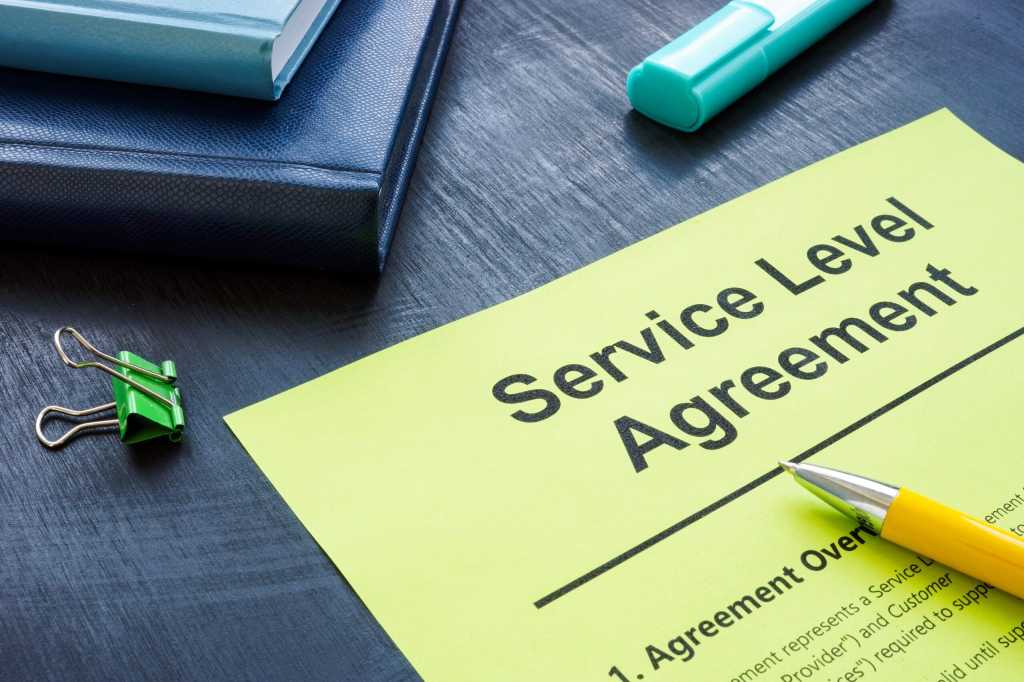For your ecommerce business to operate seamlessly, you’ll need strong partnerships with your vendors. Whether it’s your shipping carrier of choice making deliveries, a SaaS solution hosting your website, or a fulfillment partner picking and packing orders, a partner’s ability to make good on their promised services directly impacts your business.
To make sure that both parties are clear on what those promised services are, most brands and vendors establish service-level agreements (SLA). These agreements align expectations, maintain accountability, and ultimately help both ecommerce brands and their partners achieve their goals.
In this guide, we’ll cover the different types of service level agreements, why they are important in ecommerce, and how to implement SLAs in your ecommerce partnerships.
What is an SLA (service-level agreement)?
A service level agreement, or SLA, is a formal, documented agreement that outlines the level of service that a vendor is expected to provide to their client.
Specifically, an SLA specifies the details of the service, the standards to which a vendor must adhere, and the metrics for measuring service performance. An SLA will also outline any financial penalties that the provider incurs should they fail to deliver on any part of the agreement.
An SLA formalizes a commitment between a service provider and their client, and both parties must agree on the terms. This kind of binding contract helps ensure that neither the vendor nor client make unfair demands of the other, and sets expectations for the partnership.
The meaning of SLAs in ecommerce and business
While SLAs are used across many different industries, they are particularly important for ecommerce brands. Ecommerce businesses usually work with at least a couple outside companies, vendors, suppliers, or manufacturers to support different aspects of their operations. These may include:
- Technology and software solutions (to host their ecommerce website, track orders and inventory, capture and analyze data, etc.)
- Warehousing providers (from whom they rent warehouse space)
- Logistics partners (for outsourcing activities such as receiving, stowing, picking, packing, etc.)
- Carrier partners (for last-mile shipping and delivery)
“The technology that ShipBob has, like bulk uploads and their advanced reporting, is how we know we’re with the right partner. ShipBob’s ability to meet SLAs, whether it’s receiving our inventory or getting a B2B order out, is incredible. At the end of every week, I look at the report of how many orders ShipBob sends out with Bear and Gard and we’re always amazed.”
Courtney Trevino, VP of Finance & Ops at BRUCE BOLT
Because different types of partners provide different services, the details, requirements, and standards covered in each partner’s SLA will vary. For instance, a warehousing partner’s SLAs may specify the maximum number of days they can take to receive and stow inventory, while a SaaS partner’s SLA might dictate a certain amount of uptime for a web page or software tool or a response time or resolution time if there is an outage or downtime.
SLAs are important for ecommerce brands because they serve as a contract that formally outlines the level of service that a brand can expect from each of their vendors. When the ecommerce business knows what services they will receive, what terms and conditions apply for those services, and what standards should be maintained during service delivery, they can plan around those expectations.
SLAs also hold vendors accountable for providing the services that an ecommerce brand pays for, which helps to establish trust and provides peace of mind.
3 types of SLAs
There are three main types of SLAs that are used across industries.

1. Customer-based SLA
A customer-based SLA is tailored to address the needs of a specific customer, meaning that the SLA is designed for one client (rather than for a vendor’s entire customer base). It includes details about the service level that the customer is entitled to, the terms and conditions to be followed, and the key performance indicators to be met.
This type of SLA can be highly beneficial for brands, as it’s customized to ensure that the client gets exactly what they need out of the partnership. The service provider also gets a very clear idea of how to meet their client’s business needs, since the SLA leaves little room for misaligned expectations.

2. Service-based SLA
Service-based SLAs are built around a specific service that a vendor offers to multiple customers. This type of SLA standardizes the service, outlining the details, limitations, KPIs, and quality of the service whenever and to whomever it’s offered.
A third-party logistics provider, for example, may offer a service-based SLA for order accuracy. This means that the provider agrees to maintain a certain order accuracy rate for every brand that it partners with.
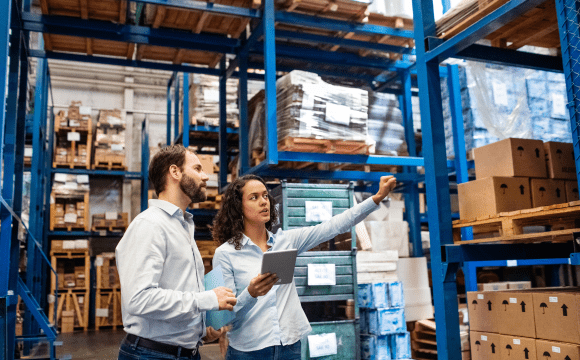
3. Multi-level SLA
A multi-level SLA is often used when a vendor offers the same service to multiple customers, but at different levels. In other words, a company can offer variations of an SLA, promising different performance levels depending on what service tier a customer uses.
For instance, while a 3PL company’s general SLA might set fulfillment time between 3-5 business days, the SLA for customers using their premium 2-day shipping service may be promised a shorter timeline of 1-2 business days.
How SLAs are structured in ecommerce
Every service-level agreement is different in terms of structure and content. Some vendors may have standard SLAs that they use across all customers and that are a condition of the partnership, while others may collaborate with you to develop SLAs unique to your brand.
Key components of an SLA
No matter what vendor or industry you’re dealing with, all SLAs should include the following components:
- Agreement Overview – A section summarizing the key details of the agreement, such as the relevant stakeholders, the start date, the purpose of the agreement, and the services provided.
- Stakeholders – A complete list of all the relevant parties involved in the agreement, along with their responsibilities.
- Service Descriptions – A more in-depth description of all the services provided, along with how they’re delivered, what circumstances are considered, what the typical turnaround time is, etc. It should further go into detail about hours of operation, deliverables, processes, location of dependencies, technologies/apps used to deliver the service, and more.
- Service Exclusions – A list of services that aren’t included in the agreement, which helps to minimize confusion.
- Service Measurement – A definition of all the relevant KPIs and performance metrics that will be used to track service performance. These baseline benchmarks will be very service- and industry-specific.
- Service Tracking and Reporting – A section outlining the reporting structure that should be followed and the intervals at which performance should be tracked and reported. It should include information about who to report findings to, rules for escalation, and more.
- Conditions for Cancellation – A list of conditions under which the agreement may be canceled, such as a failure to provide the expected services or a failure to meet the specified benchmarks. It should also include the timeline for expiration and relevant notice periods.
- Redressal – A clear definition of the terms of compensation or repayment in case the service provider fails to fulfill their SLA obligations.
- Security Measures – A definition of the measures taken by the provider to maintain data security and prevent cybersecurity threats.
- Periodic Review and Change Processes – A walkthrough of the review process, such as when the review should take place and how often, who should carry out the review, and how changes should be implemented.
SLA hurdles ecommerce businesses face
Just as third-party vendors and partners commit to SLAs for ecommerce brands, ecommerce brands commit to SLAs for their online shoppers and end customers. However, they may experience a number of challenges when trying to meet these SLAs.

Inventory management issues
Issues in the inventory management process could result in delays or inaccuracies that prevent ecommerce businesses from meeting SLA requirements. For instance, if a brand underestimates the amount of inventory they have on-hand and accidentally stocks out of a product, they could be forced to put customers on backorder, undercutting their delivery time SLA.
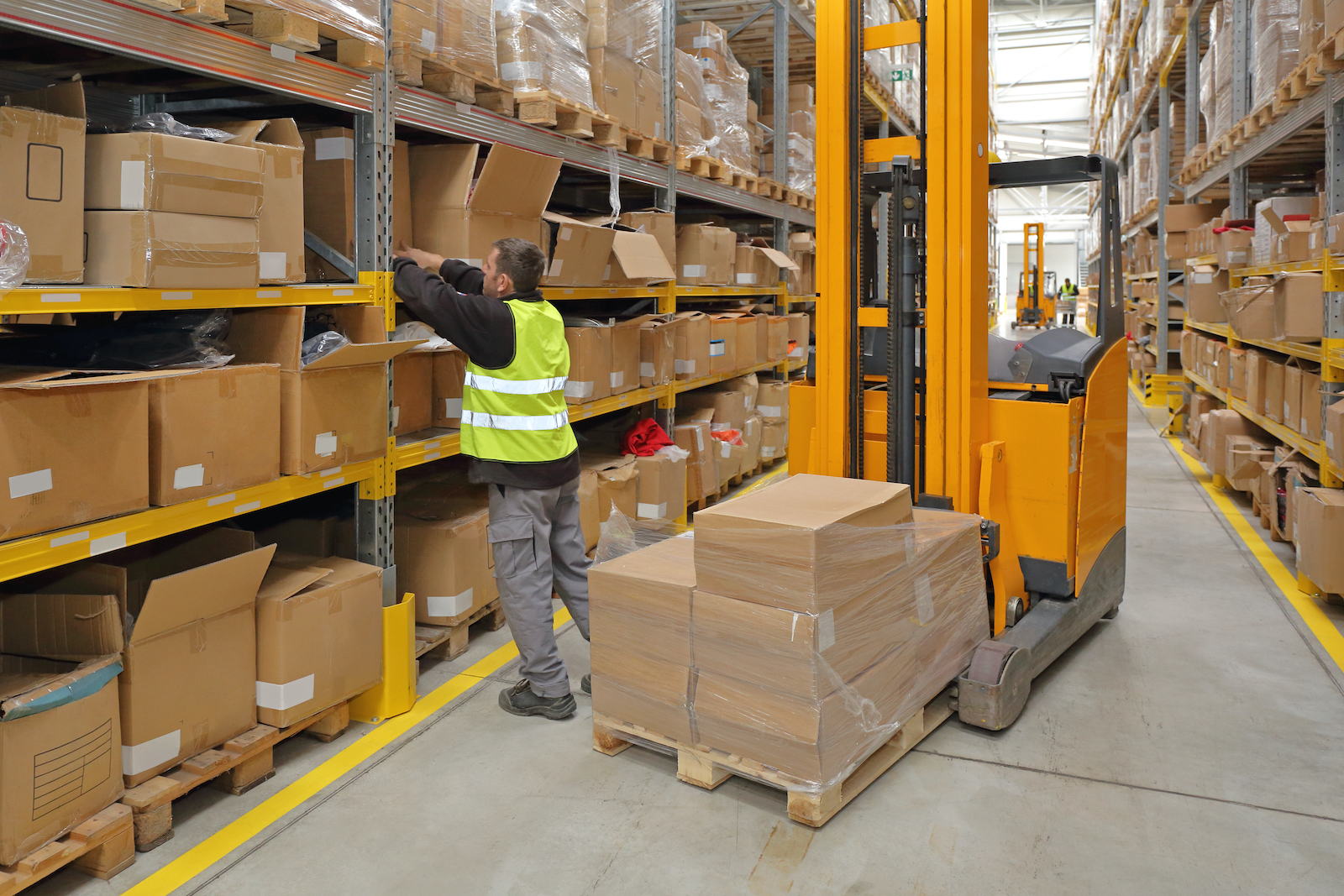
Shipping and fulfillment delays
If an ecommerce business experiences issues in the supply chain, it could lead to delays in shipping and fulfillment, which could prevent them from meeting SLA requirements. Supply chain bottlenecks or disruptions, for instance, prevent goods from moving seamlessly throughout the supply chain. This means that businesses may be unable to fulfill orders and ship them out on time, which will impact customer satisfaction.
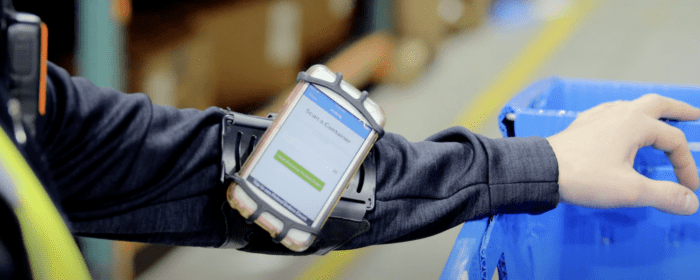
Technology and integration challenges
Using outdated technology or failing to integrate tools can create issues that prevent ecommerce businesses from fulfilling SLAs. If different platforms aren’t properly connected, businesses don’t have the seamless visibility needed to effectively manage and fulfill orders.

Scalability and geographic difficulties
As ecommerce businesses scale and expand to new regions, they may experience new challenges that make it difficult to meet their SLAs. This is particularly true if their growth is sudden or if they’re expanding to remote geographic areas where delivery is unexpectedly difficult.
Best practices for implementing SLAs
While SLAs are very useful for managing expectations, failing to fulfill them could result in financial (and even legal) repercussions. That’s why it’s important to carefully craft your SLAs and review your partners’ to position your brand for success.
Here are some best practices for successful SLA creation and implementation.
Set clear, realistic expectations
Aligning expectations is crucial to maintaining good supplier relationships; otherwise, it could lead to misunderstandings and disputes down the road. Make sure your SLAs set clear expectations on what services are to be provided, along with timelines, deliverables, quality of service, and more. The more specific you are with your expectations, the better you can ensure SLA compliance.
SLAs should also be realistic. If a potential partner’s SLAs sound too good to be true, make sure to double check them against industry standards and have the provider confirm how they will achieve the SLA’s standards. If you are setting SLAs for your ecommerce business, remember to leave yourself enough wiggle room to navigate minor issues or delays. Avoid overpromising, as you will be more prone to disappoint customers and damage your brand’s reputation.
Monitor and report
Regular monitoring is essential to maintain SLA compliance, so make sure to constantly track relevant KPIs. In ecommerce logistics, this typically includes KPIs around:
- Warehousing, such as like receiving time and putaway accuracy
- Fulfillment, such as OTIF rate and order lead time
- Shipping, such as on-time shipping rate
Note any deviations and point them out to the provider before they impact your overall operations. Some partners (like ShipBob) may even offer proprietary software or an analytics dashboard that tracks key data in real-time, so that you can view performance and SLA metrics at any time without having to hunt down and analyze the data yourself.
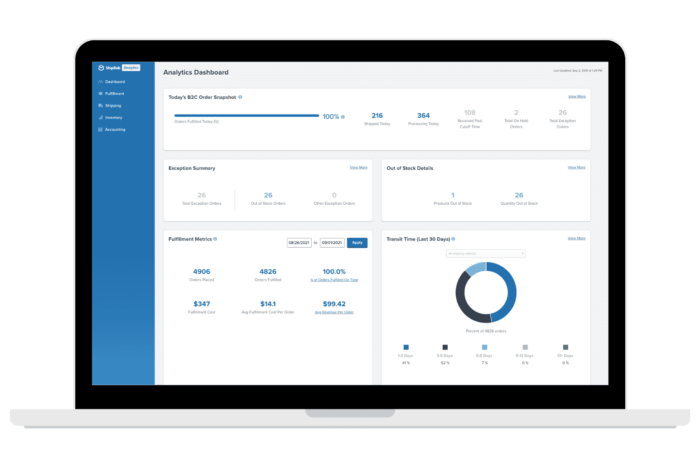
Improve and optimize
With SLAs holding you and your partners accountable for meeting certain performance standards, it’s easier to see what operations or business processes need improvement. By consistently monitoring SLA performance data, you can identify opportunities for optimization across your supply chain while making sure that SLAs are met. You may even discover ways to exceed customer expectations and improve satisfaction.
Meet and exceed your SLAs with ShipBob’s fulfillment solutions
The best way for your ecommerce business to meet its SLAs for its customers is to partner with an industry-leading logistics partner that meets theirs. As an expert supply chain and logistics platform, ShipBob delivers the warehousing, fulfillment, and shipping solutions you need to not only uphold your SLAs, but delight customers – all while staying true to our own SLA commitments to your business.
Here are just some of the ways that ShipBob empowers brands like yours to achieve their SLAs.
Achieve 2-day shipping
ShipBob’s 2-Day Express Shipping program ensures that customer orders are delivered within two days – period. This helps brands meet tight delivery SLAs to compete with ecommerce giants like Amazon, increase conversion (especially with 2-day badging on eligible products), and even boost customer satisfaction by reducing order lead time.
“Because we sell a high-quality anti-aging product, we want to provide high-quality service throughout the whole customer experience — and that includes a quick and smooth delivery that shoppers have come to expect. ShipBob’s 2-Day Express ship option lets us meet these expectations for US customers, and compete with the likes of Amazon for speedy fulfillment.”
Maria Osorio, Logistics and Operations Director at Oxford Healthspan
Distribute inventory for fast, affordable delivery
Alternatively, brands looking to meet a 2-day delivery SLA can distribute inventory strategically across the US using ShipBob’s Inventory Placement Program. ShipBob’s proprietary algorithm uses your brand’s real order data to calculate the most optimal split of inventory across our network of dozens of fulfillment centers, so that you can place inventory closer to customers. This enables you to ship orders via inexpensive ground shipping, and still have them arrive in 2 business days.
“By leveraging ShipBob’s US fulfillment network, we’ve significantly reduced shipping times. Previously, it would take us five to six business days to deliver items to customers. However, with the utilization of four of ShipBob’s US fulfillment centers, the average delivery time has been reduced to just two and a half days from order receipt to customer receipt.
Expanding our warehouse network from 2 to 4 warehouses has translated into substantial cost savings, amounting to $1.5 million in freight expenses for Our Place.
Currently, only 2% of our parcels are reaching Zone 7 or Zone 8 collectively, indicating that 98% of our parcels are reaching Zones 1 through 6. By shipping locally to lower zones, we’re achieving the most significant reductions in outbound costs.”
Ali Shahid, COO of Our Place
ShipBob will even handle physically distributing your inventory for you. Simply send your inbound inventory to one of ShipBob’s receiving hubs, and we’ll take care of sending it to regional fulfillment centers on your behalf.
Power your operations with ShipBob’s WMS
ShipBob’s industry-leading warehouse management system (WMS) gives you real-time visibility and control over your ecommerce operations. It serves as a single source of truth for managing every aspect of your ecommerce, including inventory management, order management, transport management, and picking and packing – giving you real-time insights to help you meet your SLAs.

ShipBob’s WMS can also help your brand improve order accuracy and operational efficiency through location specific inventory visibility, flexible picking methods, and prescriptive, visual step-by-step packing flows and built-in visuals.
“ShipBob’s WMS has more than doubled, if not tripled, our productivity in terms of labor hours. Our average days to ship is now only 0.8 days, so most packages are shipping same-day or next-day, with rare exceptions. We’ve cut 4 days of lead time because orders are getting processed, fulfilled, and shipped more efficiently. When we first started with ShipBob, we were doing about 15K orders per month, and now we’re processing 30K — double what we were doing just six months ago.”
Ben Tietje, Co-Founder and CEO of Earthley
Leverage a global fulfillment network
ShipBob has fulfillment centers in Canada, Australia, Europe, and the United Kingdom. By storing inventory and fulfilling orders from these fulfillment centers, you can both minimize cross-border shipping complexities and create faster, more affordable delivery experiences for international customers.
This enables you to meet delivery SLAs no matter where your customers are, and helps you scale your brand globally.
“You can always navigate cross-border complexities, but you can’t undo a customer’s stressful delivery experience. Leveraging ShipBob’s global network to fulfill and ship locally reassures our customers, so that when someone in a key market like Australia or Canada buys from us, they’re not worrying about their order getting stuck in customs or wondering if they’ll ever get their items. They also know it’s not going to take two weeks or more to be delivered, and they don’t have to pay exorbitant international shipping rates.”
Sergio Tache, Founder and CEO of Dossier
Access data-driven insights
ShipBob’s robust analytics dashboard provides comprehensive insights into your supply chain performance so you can continuously optimize your logistics for cost, speed, and efficiency. You can use these insights to pinpoint areas where you’re failing to meet SLAs and make timely improvements to reduce transit times, improve the customer experience, and ensure SLA compliance.

“In my experience, ShipBob is a lot more clear and transparent about what customers can expect compared to the other 3PL we used. ShipBob’s warehouse receiving process and documentation are really detailed. I like being able to see the SLAs so I can know when receiving will be fulfilled.
ShipBob’s analytics dashboard is quite helpful and straightforward. It’s really helpful to have that level of visibility so we don’t have to constantly email back and forth, asking when things will be completed. It saves a lot of time and helps set expectations appropriately.”
Peter Liu, Co-Founder of RIFRUF
For more information on how ShipBob can help you meet your SLAs, or what ShipBob’s service level agreements look like, click the button below to get in touch.
SLA meaning FAQs
Below are answers to the most commonly asked questions about SLAs.
Why are SLAs important for ecommerce businesses?
SLAs help ecommerce businesses to manage expectations for service, uphold specific service standards, and ensure accountability in a partnership.
How can ShipBob help businesses meet their SLAs?
ShipBob provides industry-leading technology and fulfillment solutions to help businesses meet and exceed their SLAs. Whether it’s the promise of 2-day delivery achieved through ShipBob’s 2-Day Express Shipping program and the Inventory Placement Program, or keeping order accuracy high using ShipBob’s WMS, brands can leverage ShipBob’s suite of services to deliver on their promises to customers.
What’s the difference between an SLA and TAT?
An SLA is a formal agreement that outlines the terms and conditions of services that a vendor is to provide to their client. TAT, or turnaround time, is the amount of time required to meet deliverables or resolve customer problems.
TAT is a vital element in ecommerce SLAs, as it helps manage expectations on how much time the vendor typically takes to deliver a service.
How often should SLAs be updated?
SLAs should be reviewed and updated periodically, depending on the complexity of the agreement.
